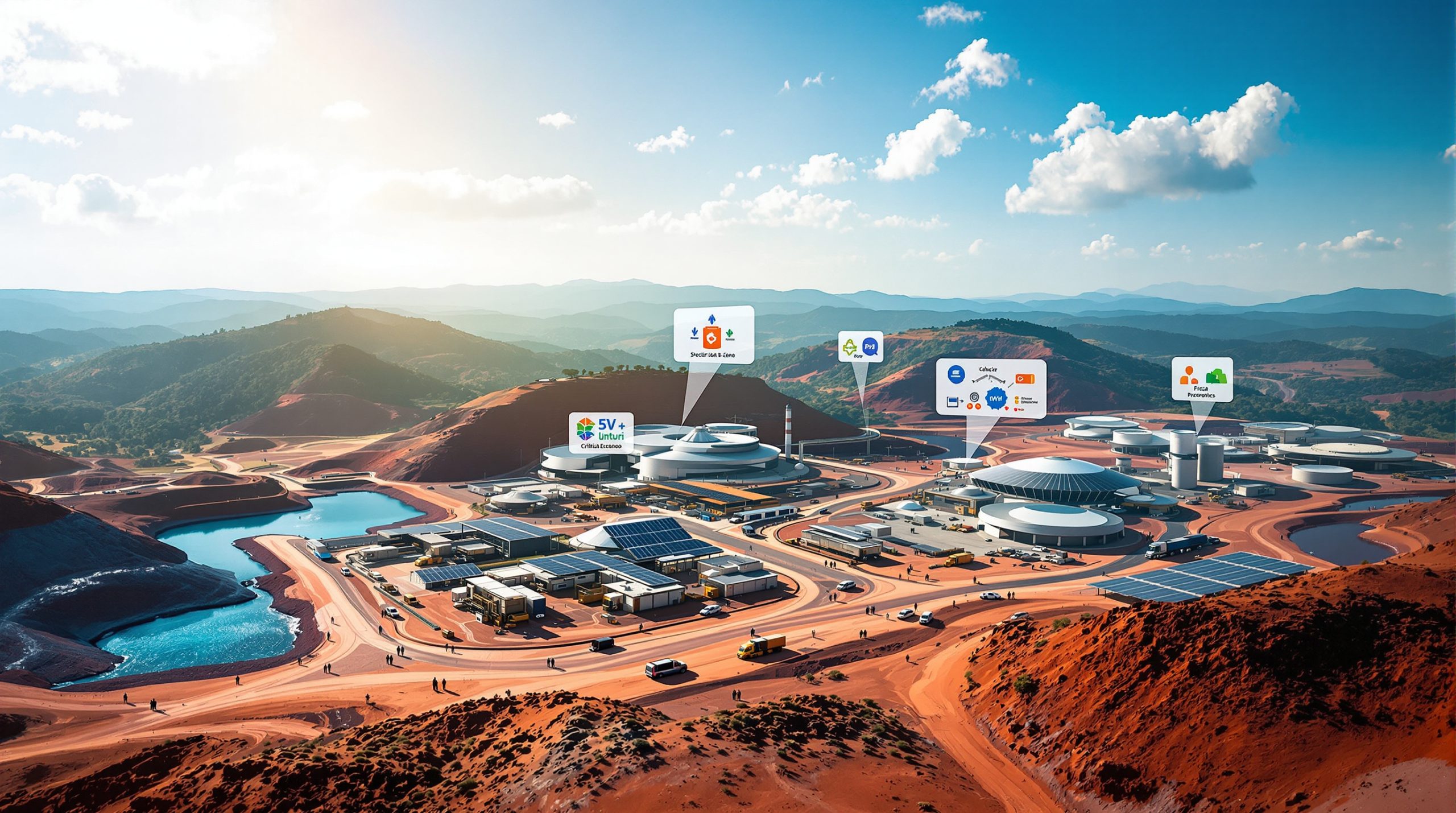The Evolving Landscape of China's Coking Coal and Coke Market
China's metallurgical coal and coke markets continue to experience dynamic shifts in 2025, with regional price variations, supply constraints, and changing demand patterns creating a complex market environment. This comprehensive analysis examines current price structures, supply-demand fundamentals, and future projections that are shaping this critical component of China's steel industry.
What Are the Current Price Trends for Coking Coal in China?
The price of coke and coking coal in China displays notable regional price variations, with premium quality coals commanding significant price differentials based on location, quality specifications, and local supply-demand dynamics.
Regional Price Variations Across China
Northern China's coal markets, particularly in Tangshan, currently command premium pricing for low-sulfur coking coal at approximately 1,200 yuan per metric ton. This represents a 20 yuan premium over Central China's Linfen market, where comparable low-sulfur coking coal trades at 1,180 yuan per metric ton.
This price differential stems from several factors, including Tangshan's strategic proximity to major steel production hubs in Hebei province, which reduces transportation costs for steelmakers. Additionally, stricter environmental standards in Northern China have limited local production, creating tighter supply conditions that support higher prices despite the higher concentration of steel mills in the region.
As industry analyst Zhang Wei noted in a recent SMM market report, "The transportation advantage of Tangshan's coking coal mines allows them to maintain premium pricing despite increased competition from inland producers attempting to penetrate coastal markets."
Metallurgical Coke Price Structure
The metallurgical coke market displays a clear quality-based pricing hierarchy, with processing methods significantly impacting market value:
- Premium Grade I Coke (Dry Quenching): This top-tier product commands 1,440 yuan/mt nationwide, reflecting its superior quality characteristics and environmental production method.
- Quasi-Grade I Coke (Dry Quenching): Trading at 1,300 yuan/mt, this represents a 140 yuan discount to premium grade while maintaining the environmental benefits of dry quenching.
- Grade I Coke (Wet Quenching): Available at 1,120 yuan/mt, the traditional wet quenching process creates a significant 320 yuan gap compared to dry-quenched premium material.
- Quasi-Grade I Coke (Wet Quenching): The most economical option at 1,030 yuan/mt, this grade represents a 410 yuan discount from premium material.
The substantial price spread of 410 yuan/mt between top and bottom grades reflects the steel industry's increasing willingness to pay premiums for higher-quality inputs that improve blast furnace efficiency and reduce environmental impact.
How Are Supply Dynamics Affecting the Coking Coal Market?
Recent regulatory actions and environmental policies have created meaningful coal supply challenges in China's coking coal sector, reshaping market dynamics and pricing power.
Safety Inspection Impacts on Production
Ongoing safety inspections have significantly disrupted mine operations across key coal-producing regions. According to SMM market intelligence, these inspections have forced production suspensions at multiple mining operations, particularly affecting smaller mines with less robust safety protocols.
The most severe impacts have been observed in regions with histories of mining incidents, where inspectors have implemented more stringent oversight protocols. While specific mines remain unnamed in public reports, industry sources indicate that Shanxi province, which accounts for approximately 30% of China's coking coal output, has faced particularly intensive scrutiny.
These production limitations have begun to reduce previously elevated mine stockpiles, with inventory levels showing gradual declines in recent weeks. This inventory drawdown represents a significant shift from the supply glut conditions observed earlier in the year and has strengthened sellers' pricing power in negotiations.
Environmental Protection Measures
Environmental compliance requirements continue to reshape production capabilities across the coking coal and coke sectors. Coke producers, in particular, face substantial operational challenges as they balance production volumes against increasingly stringent emissions standards.
To maintain market presence while meeting environmental requirements, many producers have implemented modified production schedules, including rotational reductions and targeted output cuts during high-pollution periods. These adaptations allow facilities to manage their emissions while maintaining customer relationships and market share.
The additional costs associated with environmental compliance—including emissions monitoring equipment, filtration systems, and process modifications—have compressed profit margins for producers. While difficult to quantify precisely, industry estimates suggest compliance adds between 50-80 yuan per ton to production costs, depending on facility size and existing infrastructure.
What Factors Are Driving Demand in China's Coke Market?
Demand fundamentals in China's coke market show notable strength, supported by positive developments in the downstream steel sector and strategic procurement behaviors.
Steel Industry Performance Indicators
The strong performance in steel futures markets has significantly influenced sentiment in physical markets. As futures contracts for reinforcement bars and hot-rolled coil have appreciated, market confidence has improved throughout the steel supply chain, supporting raw material procurement.
Rising finished steel prices have substantially improved steel mill profitability, creating financial flexibility for raw material purchasing. This profitability improvement has allowed mills to maintain high production rates despite increasing input costs, sustaining robust demand for metallurgical coke.
Blast furnace utilization rates remain elevated across major steel-producing regions, with national averages estimated above 85%. This high utilization translates directly to strong pig iron production, which represents the primary consumption channel for metallurgical coke.
Procurement Pattern Shifts
Downstream buyers have noticeably accelerated their procurement activities compared to previous months. This increased purchasing velocity reflects both operational needs and strategic positioning in anticipation of potential price increases.
The continuous destocking observed at coke production facilities provides tangible evidence that current demand outpaces production, creating an increasingly tight supply environment. Inventory reductions have been most pronounced at facilities facing environmental restrictions, as they struggle to rebuild stocks while managing production limitations.
Steel mills have demonstrated increasing willingness to secure supplies amid expectations of potential price increases. This strategic buying behavior represents a significant shift from the more cautious, just-in-time procurement patterns observed earlier in the year when inventory pressures favored buyers in negotiations.
What Is the Current Supply-Demand Balance in China's Coke Market?
The supply-demand balance in China's coke market has tightened considerably, with production constraints coinciding with sustained demand strength.
Production Constraint Factors
Several factors have limited coke production in recent months. Profit margin pressures have forced some producers to restrict output, as unfavorable cost-to-price ratios made certain production economically unviable. While specific margin data remains proprietary, industry sources indicate that smaller producers without integrated operations faced the most severe profitability challenges.
Environmental compliance requirements continue to impact production volumes, with ongoing inspections forcing operational adjustments at facilities across major coke-producing regions. These inspections have been particularly intensive in areas surrounding Beijing and other population centers where air quality remains a political priority.
Operational efficiency challenges have created complex decision-making environments for producers, who must balance production costs against current market pricing. The rising costs of raw materials, environmental compliance, and energy have compressed margins despite relatively favorable coke prices, creating incentives to limit production during periods of lower profitability.
Demand Strength Indicators
Improved steel mill economics have supported sustained raw material procurement, with stronger steel prices enabling mills to absorb higher input costs. This profitability buffer has maintained coke demand even as prices have firmed.
Steel production facilities continue to operate at high capacity utilization rates, sustaining elevated pig iron output and corresponding coke consumption. This production discipline reflects confidence in downstream steel demand from construction, infrastructure, and manufacturing sectors.
Market sentiment has noticeably improved alongside positive futures market performance, bolstering confidence in physical markets. This sentiment shift has supported forward purchasing and reduced buyer resistance to prevailing price levels, strengthening the overall demand picture.
What Is the Near-Term Price Outlook for Coking Coal and Coke?
Market participants anticipate potential price movements in both coking coal and coke markets, supported by evolving supply-demand fundamentals.
Coking Coal Price Projections
Market analysts anticipate temporary price stabilization in the immediate term, as current levels reflect a reasonable balance between supply constraints and demand fundamentals. This stabilization represents a departure from the volatility observed earlier in the year.
Selective price increases appear increasingly likely for particularly sought-after coal varieties with limited availability. Low-sulfur and low-ash coals, which require less processing and produce fewer emissions, may see the most significant upward adjustments as environmental considerations gain importance in procurement decisions.
Mine operators have demonstrated strong reluctance to discount prices despite previous inventory pressures. This seller price resistance reflects confidence in underlying market fundamentals and recognition of the production constraints created by safety and environmental inspections.
Coke Market Forecast
Stable input costs are providing a foundation for current price levels, with coking coal price stability transferring predictability to the coke production cost structure. This cost stability has reduced speculation about potential market volatility hedging.
Fundamental indicators show gradual improvement in the supply-demand balance, supporting market stability. The continuous destocking at coke plants indicates that current production remains insufficient to satisfy demand while rebuilding inventories, creating structural support for prices.
Industry participants increasingly anticipate potential upward price movements in the near term, particularly if current supply constraints persist. While specific price targets remain speculative, the consensus view suggests that downside risks have diminished considerably compared to earlier periods.
"The market fundamentals for metallurgical coke have steadily improved through Q2 2025, with inventory drawdowns and production constraints creating a much more balanced environment than we observed in previous quarters," notes industry consultant Li Mei in SMM's monthly market outlook.
How Are Transaction Patterns Evolving in the Coking Coal Market?
Transaction dynamics in China's coking coal market show notable shifts in both volume and negotiation leverage.
Market Activity Indicators
Recent weeks have seen measurable increases in completed sales compared to previous trading periods, indicating improved market liquidity and participant confidence. This transaction volume improvement represents a significant change from the hesitant market engagement observed earlier in the year.
Digital procurement channels have gained prominence, with growing activity in online bidding platforms indicating broader market engagement. These platforms have provided greater price transparency and expanded market access, particularly for medium-sized buyers and sellers seeking efficiency in transaction processes.
The slight decline in mine stockpiles has eased previous sales pressure on producers, allowing more balanced negotiation dynamics to emerge. As inventory levels normalize, producers have regained pricing leverage that was compromised during periods of excess supply.
Pricing Strategy Adaptations
Coal suppliers have demonstrated strong commitment to maintaining current price levels, resisting pressure to discount despite occasional purchasing hesitancy. This price discipline reflects confidence in underlying market fundamentals and recognition of the production constraints created by ongoing regulatory oversight.
Purchasers have shown increased willingness to transact at prevailing market rates, acknowledging the reality of supply limitations and the potential for future price increases. This acceptance represents a notable shift from the price resistance observed when inventories were more abundant.
The balance of leverage in price discussions has moved toward seller advantage, reversing the buyer-favorable conditions that characterized earlier periods. This negotiation dynamic shift reflects both physical market realities and psychological factors as buyers adjust to the changing supply environment.
What Are the Key Market Fundamentals Supporting Current Pricing?
Several fundamental factors provide structural support for current pricing levels in China's coking coal and coke markets.
Supply-Side Fundamentals
Continued output limitations at both coal mines and coke plants have created persistent supply constraints. These production restrictions stem from both regulatory pressures and economic decisions, as producers balance volume against profitability considerations.
Inventory trends show declining stockpiles at production facilities, indicating emerging supply tightness after a period of abundance. This inventory normalization has removed a significant source of price pressure that previously favored buyers in negotiations.
Cost structure analysis reveals stable production costs providing support for current market pricing. While input costs have not increased dramatically, they remain elevated enough to establish effective price floors below which production becomes economically challenging for many facilities.
Demand-Side Fundamentals
Improved profitability in steel production has supported consistent raw material demand, as mills maintain high output levels amid favorable finished steel pricing. This profitability cushion has enabled mills to absorb input cost increases without reducing production volumes.
High blast furnace utilization rates continue to sustain coke consumption, with most major steel-producing regions operating at capacity utilization above 85%. This production discipline reflects confidence in downstream steel demand and supports consistent raw material procurement.
Procurement strategies have shifted toward increased buying activity from downstream consumers, reflecting both operational needs and strategic positioning. This shift represents an important psychological change in the market, as buyers prioritize supply security over price optimization.
FAQ: China's Coking Coal and Coke Market
What quality grades are available in China's metallurgical coke market?
China's metallurgical coke market offers multiple quality grades, primarily differentiated by ash content, sulfur levels, and processing methods. The premium Grade I dry-quenched coke commands the highest price at 1,440 yuan/mt due to its superior strength, lower moisture content, and reduced environmental impact during production.
Quasi-Grade I coke variants typically contain slightly higher impurity levels while maintaining acceptable strength characteristics for most blast furnace operations. The processing method creates significant price differentials, with dry-quenched varieties commanding substantial premiums over wet-quenched alternatives due to their superior physical properties and lower moisture content.
The 410 yuan/mt spread between premium Grade I dry-quenched coke (1,440 yuan/mt) and quasi-Grade I wet-quenched coke (1,030 yuan/mt) represents approximately 28% of the premium product's value, highlighting the significant impact that quality specifications have on market pricing.
How do environmental regulations affect China's coke production?
Environmental regulations significantly impact China's coke production through multiple mechanisms, creating both operational challenges and market opportunities. Periodic inspection campaigns can temporarily reduce overall supply by forcing production suspensions at facilities failing to meet emissions standards, particularly in environmentally sensitive regions surrounding major population centers.
Emissions standards enforcement has driven substantial capital investment in filtration systems, monitoring equipment, and process modifications. These investments increase production costs but also create barriers to entry that favor larger, better-capitalized operations capable of meeting regulatory requirements.
Production restriction orders are frequently implemented during high-pollution periods or in response to regional air quality targets, creating operational uncertainty for producers and their customers. These restrictions often follow seasonal patterns, with winter months seeing more intensive limitations to combat heating-related pollution increases.
What is the relationship between steel prices and coke demand in China?
Steel prices directly influence coke demand through their impact on steel mill profitability and production decisions. When steel prices rise, as currently observed, mills can operate at higher capacity utilization rates and maintain stronger procurement activities for raw materials like coke.
The profitability buffer created by favorable steel pricing enables mills to absorb higher raw material costs without reducing production volumes. This relationship creates a transmission mechanism where strength in finished steel markets directly supports coke demand and pricing.
Production economics determine the maximum input costs that mills can tolerate while maintaining profitable operations. When steel prices increase faster than input costs, the resulting margin expansion typically leads to production increases that drive additional coke demand, creating a positive feedback loop that supports raw material markets.
How do safety inspections affect coking coal availability?
Safety inspections can significantly reduce coking coal availability through several mechanisms. The most direct impact comes from production suspensions at mines failing to meet safety standards, which immediately reduces market supply and can create regional shortages for specific coal varieties.
Operational adjustments implemented to comply with safety requirements often reduce productivity, as mines modify extraction methods, reinforce structures, or implement additional safety protocols that slow production processes. These adjustments may permanently reduce production capacity at affected operations.
Regulatory uncertainty surrounding inspection timing and standards creates conservative production planning, as mine operators build safety margins into their operational schedules to minimize disruption risk. This conservative approach often results in lower overall production than would occur in a more predictable regulatory environment.
Further Exploration
Readers interested in deeper insights into China's metallurgical coal and coke markets can explore additional resources from Shanghai Metal Market, which provides specialized price assessments, supply-demand analysis, and policy impact evaluations. Industry associations like the China Coal Transportation and Distribution Association also offer valuable perspective on logistical factors affecting regional price variations.
For those seeking to understand the global mining landscape and its implications for coal markets, resources tracking the mining industry evolution provide valuable context. Additionally, analysis of China demand prospects across various commodities offers insights into broader trends affecting metallurgical coal consumption.
Looking for Early Alerts on the Next Major Mineral Discovery?
Discovery Alert's proprietary Discovery IQ model provides instant notifications on significant ASX mineral discoveries, turning complex data into actionable investment opportunities. Explore historic returns from major discoveries and position yourself ahead of the market by visiting the dedicated discoveries page today.




